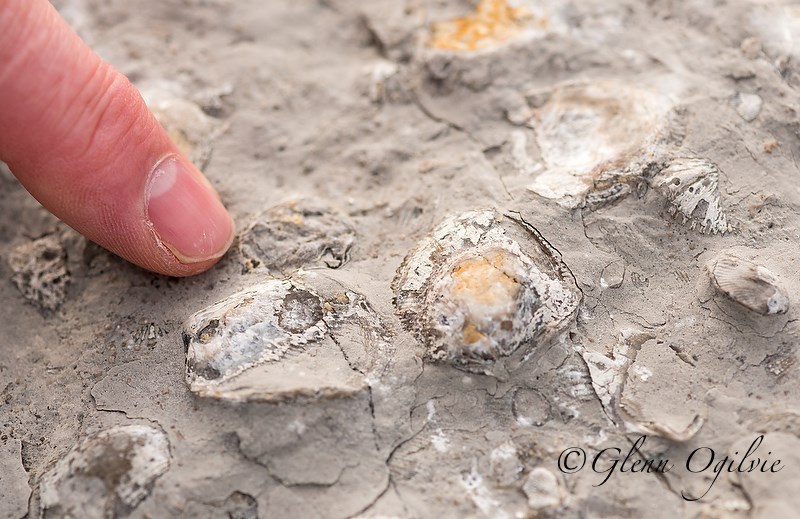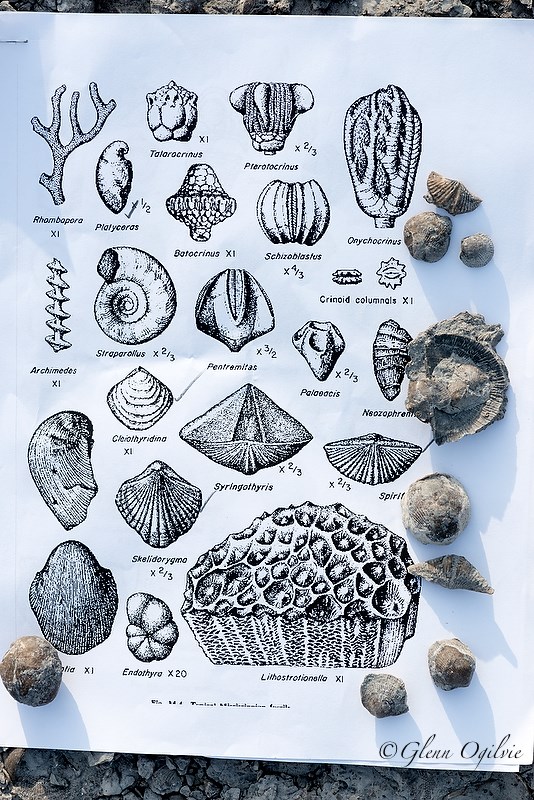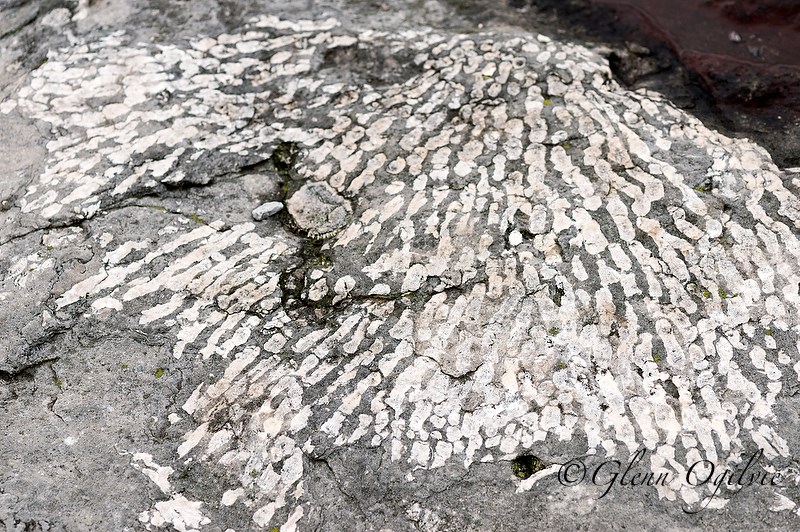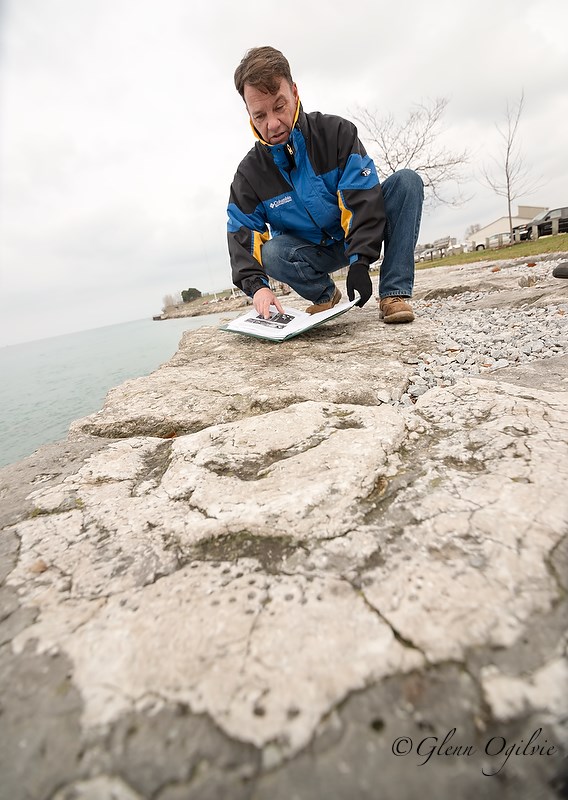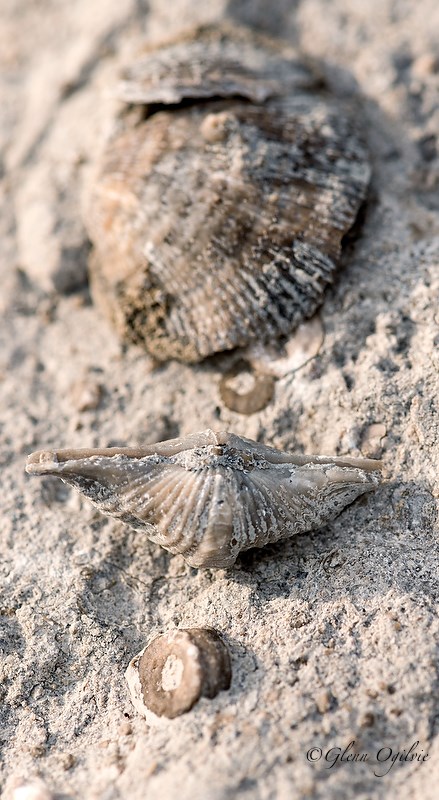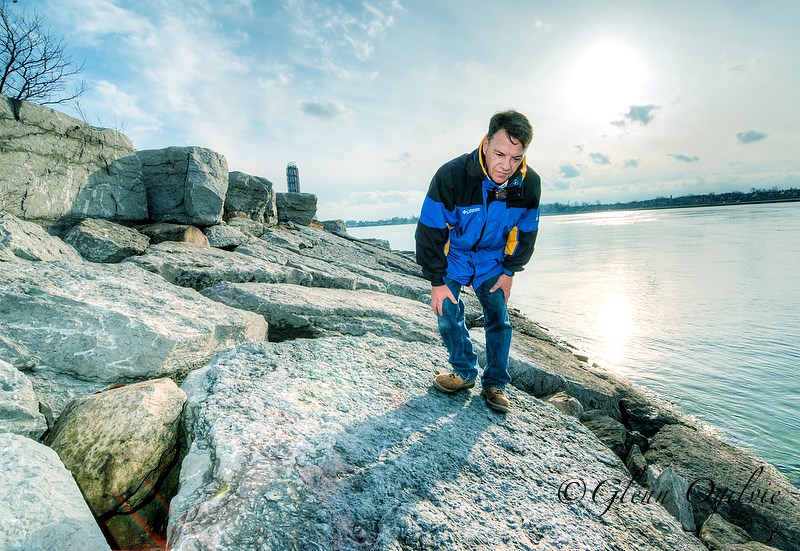George Mathewson
“Here’s a good one,” says Adam Wisniewski.
We’re poking among the rocks under the Blue Water Bridge, the most visited and photographed spot in all of Sarnia-Lambton.
But this is something I’ve never noticed before.
It’s a bed of shellfish emerging from a slab of flaking stone. Some of the clams are whole and can be picked up in your hand, others are broken shells.
All of them are 300 million years old.
“People walk by here all the time and they don’t know about this,” says Wisniewski, a lifelong member of the Sarnia Rock and Fossil Club.
“People travel all over the world to see fossils like these and we’ve got them right here.”
Not far from the clam bed is a block of rock studded with the fossilized stems of water plants that once waved in the current of a warm, shallow sea.
Further along are corals, fanciful and enormous things that are virtually the same as those you’d see today snorkeling in the Bahamas, says Wisniewski,
“You never know what you’ll find. Next year a layer of this shale could flake off and a (fossilized) fish could be laying right here.”
The shoreline between the Point Edward Casino and LAWSS water plant was constructed in stages and the stone blocks might have come from a number of area quarries, Wisniewski says.
What’s exciting is their diversity, he adds, because they cover a vast swath of earth history from Precambrian times to 245 million years ago, around the time dinosaurs were emerging.
“This is the beginning right here, when the first life forms were starting to evolve,” he says.
Curious explorers can easily find many different fossils on Point Edward’s waterfront, including those of weirdly shaped plants and corals, snails and shellfish, and the occasional trilobite, hard-shelled creatures with antennae that looked like horseshoe crabs.
The rocks themselves were once part of a single supercontinent that scientists refer to as Pangaea, which has since broken up into the continents we have today. As a result, the same fossilized life forms found at the bridge turn up in Africa, Asia and even Antarctica.
Wisniewski, 55, joined the Sarnia Rock and Fossil club as a young boy and retains a child-like fascination for the secrets locked in rock.
The club meets monthly, organizes field trips and is preparing to celebrate its 50th anniversary next year, he says.
‘It is amazing here. You can look at a stone and see the bottom of the ocean, a whole colony of life.”
